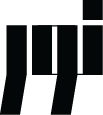About Me
I am an entrepreneur, designer, and educator. My work lies at the intersection of design, tech, and social justice. I cofounded Scopio, a photography platform and marketplace with the goal of centering images and stories told by people from underrepresented communities and regions. I have led the design and content teams, and worked with the engineering team to build enterprise and B2C products based on ethical AI and machine learning practices to solve racial biases in the image industry. I'm currently a professor at the Parsons School of Design, teaching Innovation in the context of creating solutions around climate, social, and technological challenges.
I recently co-authored and curated "The Year Time Stopped: The Global Pandemic in Photos," a photobook about the year 2020 narrated in photos and stories from around the world. I have been featured in Forbes 30 Under 30 in recognition of my work. I sit on the board and advise nonprofits that advocate for social justice, digital strategy, data, and design. I received a Bachelor of Science in Graphic Design at the Lebanese American University in Beirut and a Master of Fine Arts in Design + Technology at Parsons School of Design in New York.
Check out my resume for more details.
If you’d like to chat about work or just be friends, feel free to email me.
Press
https://www.forbes.com/profile/nour-chamoun/?sh=63423b485ef4
https://www.youtube.com/watch?v=WejD7H5XzsM
https://gritdaily.com/nour-chamoun-scopio-named-forbes-30-under-30/
https://wired.me/technology/arabic-fonts-typefaces-online/
https://thearabweekly.com/celebrating-arabic-language-digital-age
https://livingnowawards.com/158/2022-medalists
https://community.thriveglobal.com/looking-back-at-2020-in-photos-the-year-time-stopped/
What I Learned as a Designer
Design with not for the consumer/stakeholder
Designing for a stakeholder group doesn’t make sense if you’re not co-designing with that group every step of the way. Every time I bypassed consulting with the user or stakeholder, and instead made my own assumptions because of convenience or a perceived efficiency, I failed at the final result. Co-designing is not just more efficient, it’s inclusive, and that’s what truly matters at the end of the day.
Design for the most underrepresented groups
Giving the concept of “inclusion” its fullest meaning, is designing for the 99% of the population. This means co-designing with the folks from different gender, ethnic, geographical, and disability backgrounds. This looks like co-writing inclusive language, and designing the most accessible user interfaces.
Brands should always center mission & storytelling
A brand without a purpose or a mission lacks a true identity. Consistency in the mission and messaging creates trust and loyalty. Humans learn through storytelling. No matter how important the mission is, if the story is not compelling, no one will listen. Minimize words and jargon, and simplify the message.
What I Learned as a Business Owner
Being mission-driven & market-focused are contradictory
The mission of a company will never thrive if it is given less or the same importance as profit margins. In order for it to truly prevail, it needs to be prioritized over market demands. I learned this the hard way, and because we exist in a capitalist framework, this is very challenging to achieve, but definitely possible.
Environmental & ethical impacts of tech and AI
When I first cofounded my business in 2014, I found myself working on cutting edge machine learning algorithms with our engineering team. I got to learn about the inner workings of AI early on in my career. We aspired to perfect image processing systems that could analyze photos through proprietary computer vision. To get there, we had to work from existing data sets of machine learning models developed by big tech companies. I quickly saw the racial and gender bias of these models at identifying humans in images. People were consistently misgendered, especially if they were non-binary, and darker-skinned people were very often mistaken or not identified, altogether. So, I created a framework for the AI to target more diverse image categories around gender, race, geography, and other visual expressions. I also created guidelines in the company bylaws to not sell our AI system to law enforcement, the military, surveillance agencies, or third party actors who could use this data to surveil and harm vulnerable groups. These practices got us closer to the ethical AI system we were aspiring for.
On the other hand, environmentally, these huge models were consuming missive amounts of energy just to run. We were using one of the biggest cloud computing server providers that was definitely not running on renewable energy. After different attempts, it was very challenging to find a green server provider that could meet our computing needs. This is a larger systems issue with the tech industry that needs to be prioritized, because the status quo will be very destructive, the more companies apply intensive artificial intelligence computing processes.
What I Learned as an Educator
Passion within inspires others
The reason that I took the professor position that I was offered at Parsons School of Design was because it was a subject matter that I truly cared about because it resonated with my own experience and aspirations. The subject of “Innovation” could not be taught without talking about ethics and what and who to innovate for. The social, technological, environmental, economic, and political (STEEP Framework) consequences and treating these fields as intersectional, were an essential part of the subject matter.
I chose to dedicate the bulk of my courses to climate and technological innovations, because it allowed me to apply my expertise in tech to advise on theoretical solutions for the climate crisis in the classroom. I know that this issue is and will be at the forefront of concern for generations after mine, so speaking about these issues with conviction and passion to my students, in turn, inspired them to take on projects that had the STEEP dimension.
